Wildfires have burned in South Salem 3 years in a row, raising fears among residents
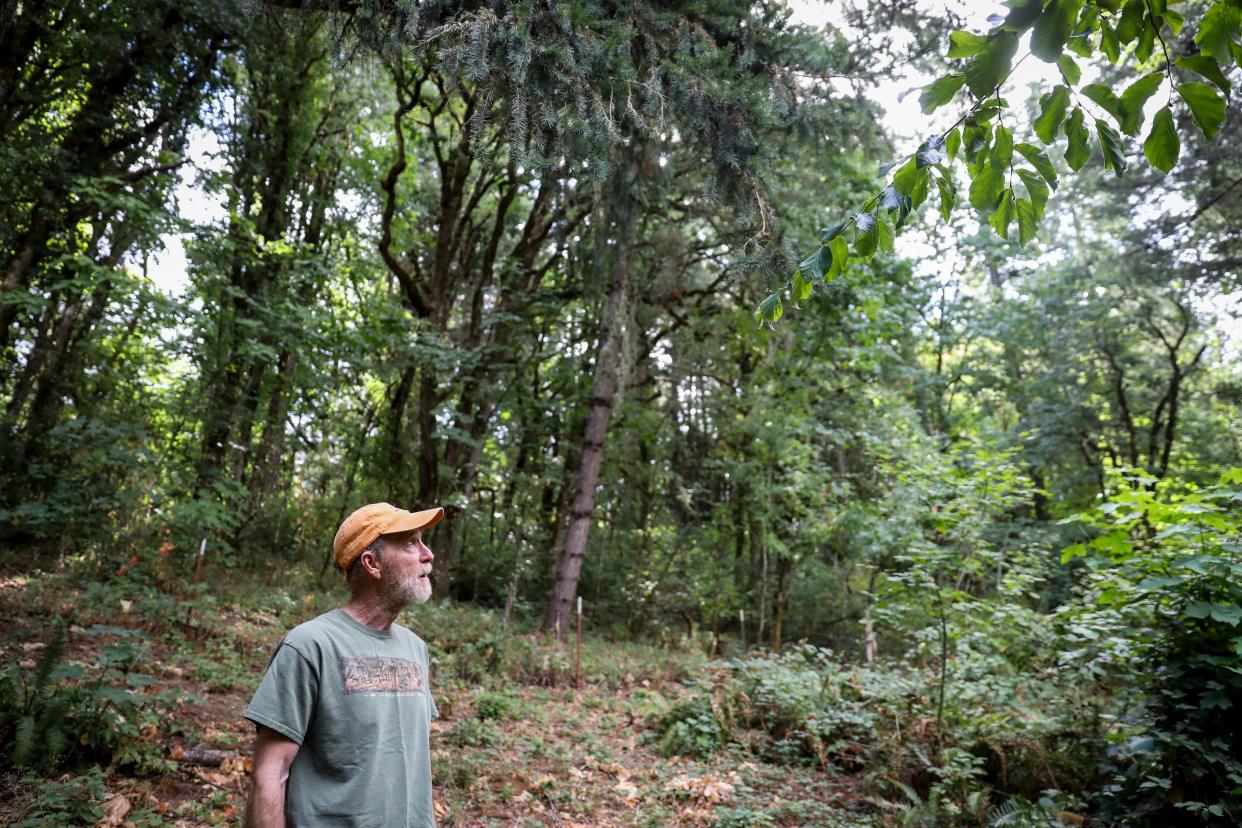
Three potentially catastrophic late-summer wildfires in three years have residents in the hills of South Salem concerned and frustrated.
Their homes are scattered in tinder-dry hills covered with parched grasses and steep forested hillsides, prime conditions for a small brush fire to explode into an out-of-control wildfire that threatens lives and property.
While determining what sparked a wildfire can be a challenge, the real culprit is hot, dry and extremely flammable conditions increasingly brought on by climate change.
The once unthinkable is now a constant worry.
"It's probably fair to say that my level of concern is higher than the average person, but I think it's justified," said Ron Miner, who lives within a couple miles of all three fire locations. "It's the reality of now, and it has the potential to get worse."
The urban wildfire crisis is real and not going away.
Areas in South and West Salem are especially vulnerable, with large swaths of unkempt brush, thick forests and steep terrain providing fuel for potential fires and presenting difficult conditions for firefighters.
The potential for loss of life and property in any of the past three incidences was real. If the wind had picked up and blown in a different direction and without heroic efforts by witnesses and firefighters, the outcome could have been different in any or all.
The three fires scorched a total of 189 acres and destroyed two outbuildings.
Residents were lucky. They returned to find their homes intact.
But what happens next time? With another month of probable high temperatures ahead, what is the community doing to avoid another Santiam Canyon or Lahaina-level calamity?
Close call with Liberty Fire averted with quick response
The Liberty Fire last month was a close call, its fast-spreading flames as tall as trees threatened homes in every direction.
About 600 South Salem households were placed under Level 3 "go now" evacuations and ordered to leave immediately due to imminent danger. People fled their homes, some with pets and livestock in tow.
"The quick and timely response from SFD and mutual aid companies, along with tactical decisions made by the incident commander, resulted in many properties and lives saved," Salem Fire Deputy Chief Brian Carrara said in an email to the Statesman Journal.
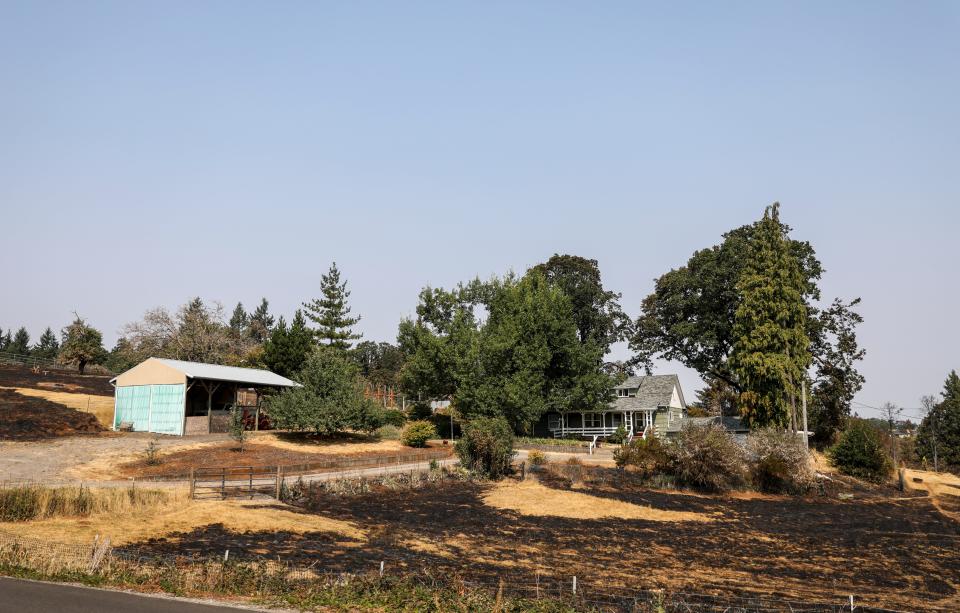
More than 100 firefighters, with more than 100 trucks, planes and vehicles, fought the 50-acre blaze. Salem Fire Department, Mutual Aid, Oregon State Fire Marshall's Office, Marion County Sheriff's Office, Salem Police Department, city of Salem employees and a group of volunteers from a nearby construction site contributed.
Carrara said the wind initially pushed the fire toward homes on Jory Hill Road. Two properties had flames flanking their houses, but fire crews saved them. Winds pushed the fire back toward Liberty Road and away from further homes, Carrara said, giving firefighters time to hold the fire in check until air support arrived and provided water drops.
The sound of Fire Boss air tanker engines overhead that afternoon and evening was music to the ears of area residents.
"We've been very impressed with their response," Vitae Springs resident Marilyn Bacon said. "They have really learned you've got to get on it."
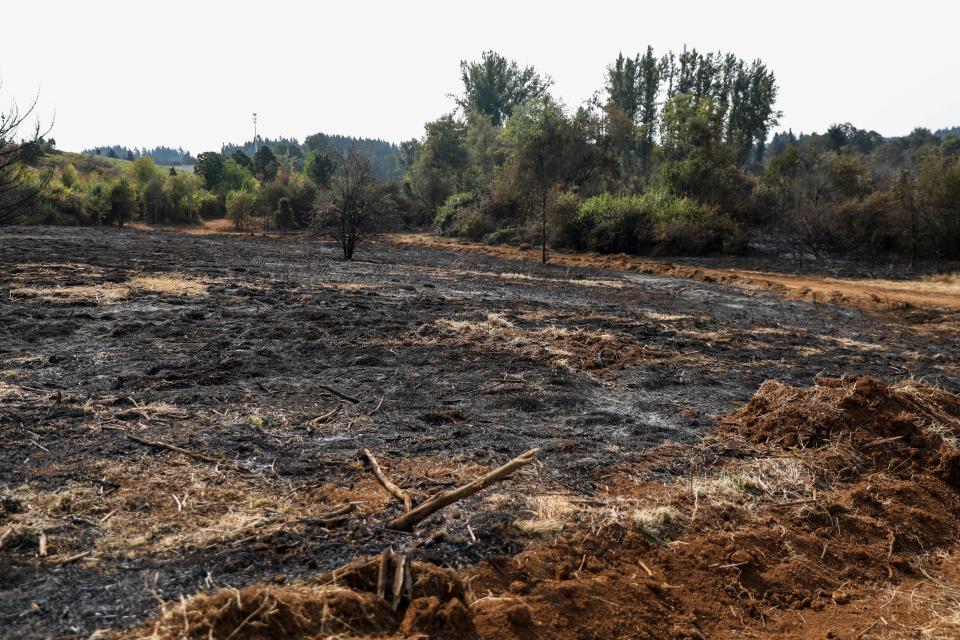
What caused the South Salem fires?
Human-caused wildfires can be accidental, intentional or an act of negligence. Arson is not suspected in any of the three South Salem wildfires.
The Vitae Springs fire in 2021 was accidental, sparked when a car crashed into a telephone pole alongside the road near tall grass and ignited a brush fire. Firefighters contained it to 15 acres.
Sparks or hot exhaust systems from power-driven machinery are believed to have caused the others, although fire officials have not released official causes.
Salem Fire said the cause of last year's Vitae Springs fire is "undetermined." A year later, the department is working to release its full investigation report, Carrara said.
"The official origin and cause report will categorize this fire as undetermined. Investigators identified three potential hypotheses as to the cause but are unable to prove or disprove any of these three potential ignition sources and thus will officially list this fire as undetermined."
Several residents heard it started when someone was mowing tall grass in a field near Prospect Hill and are curious why no official cause has been made public. Miner pointed out: If you do not identify the cause, how can you prevent it?
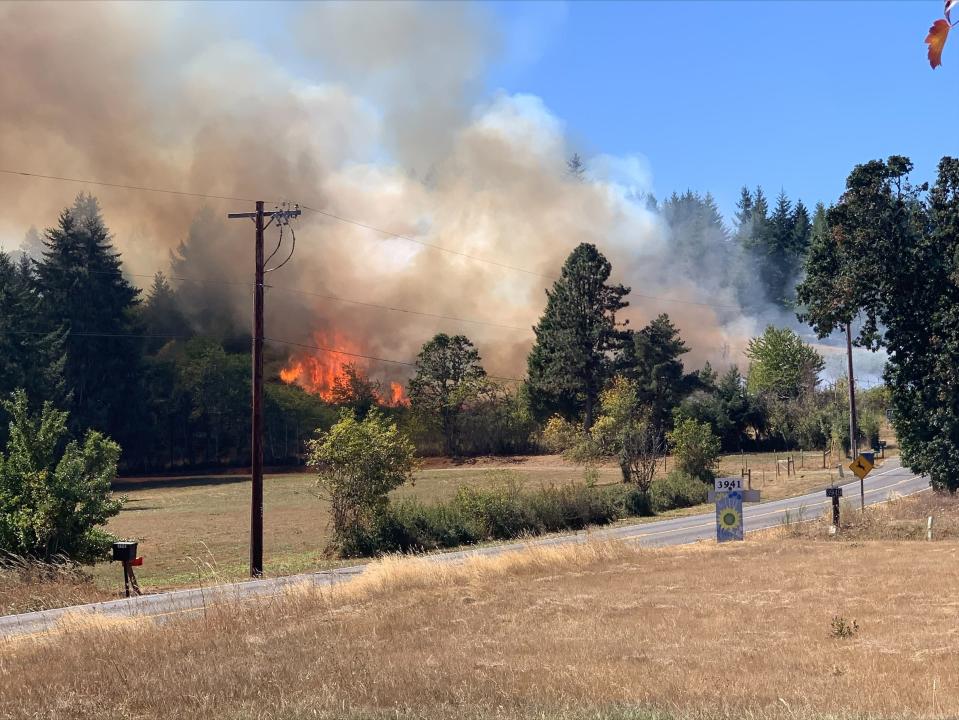
Salem Fire is labeling the cause of the Liberty Fire as "accidental, secondary to motorized equipment in a field of dry grass." Officials would not provide any other details. A public records request from the Statesman Journal prompted the response that the "report is still in process."
A witness told the Statesman Journal she saw ATV riders in the field shortly before the most recent fire started.
"At this time," Carrara said, "there are no plans to charge any resident(s) for recovery of costs of this fire."
Hotter, drier conditions fuel wildfire danger in Oregon
In 2021, Salem had 41 days with temperatures at and above 90 degrees, breaking the city record of 34 days set more than half a century ago. The city also recorded its hottest temperature on record — 117 degrees that June.
Last year, there were 32 days of 90-plus-degree weather, and Salem has had 23 so far this year. A decade ago, the average for the city was 18 days of high temperatures over 90. In the 1980s and 1990s, the average was 14.
Of the 13 hottest years recorded in Oregon, nine have come since 2000 and seven have come since 2010, as climate change impacts the Beaver State.
"All the scientific data is saying it's going to get worse. And I can tell you that has been my experience watching this for the last 10 years or so," Jim Trierweiler, chief of the Marion County Fire Defense Board and a captain for Salem Fire Department, told the Statesman Journal in 2021.
Educating the community, creating more awareness
Salem Fire says it has made significant efforts to educate the public through various channels about the dangers — not just in South Salem but also West Salem, which has similar hills, terrain and vegetation and the same vulnerability to wildfires.
Some residents in the impacted areas are well aware of the risks, but not everyone.
Miner has been actively involved with neighbors to raise awareness, even putting informational leaflets into mailboxes. They have been on high alert longer than most and invited Salem Fire Department to make a presentation after a 10-acre grass fire in 2017 near River Road S.
He has written letters to the editor to the Statesman Journal and letters to his state representatives and the former governor.
He believes fire and local officials should have a responsibility to enforce burn and fireworks bans and to provide tips for when not to use motorized farm equipment or ride ATVs in tall, dry grass.
"We need a common sense checklist of how to be a responsible citizen in this modern world we're living in with summers of extreme temperatures, drought and long rainless spells," Miner said. "We will never eliminate all accidents. But there is no reason we cannot eliminate most of the carelessness."
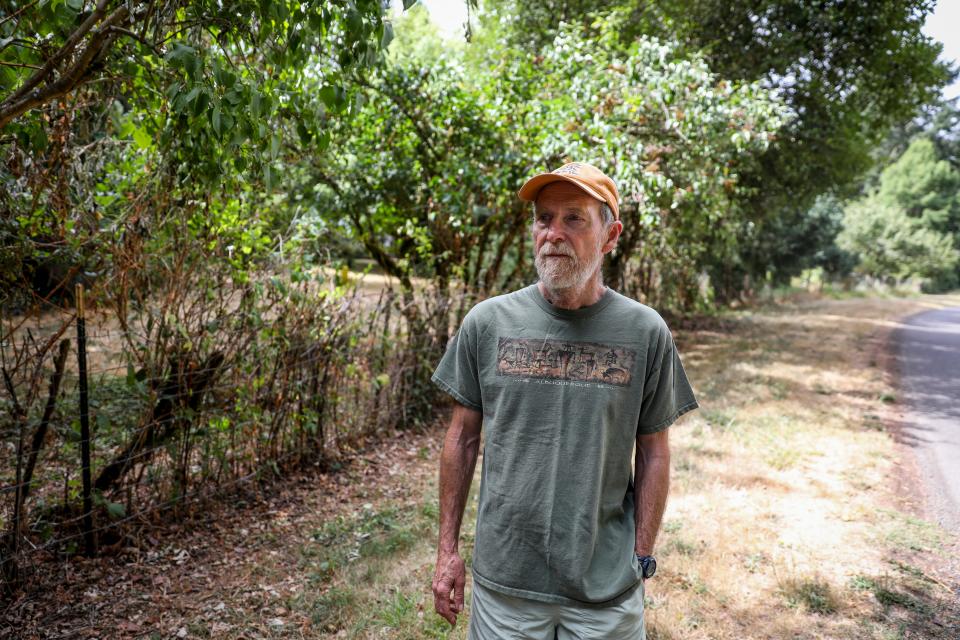
Carrara said burn bans are implemented based on a series of factors, with weather being the No. 1 influencer, including humidity, winds and heat.
"The Fire Defense Boards of counties will evaluate these factors before recommending a burn ban be initiated," he said. "It is then up to the local jurisdictions on whether they will impose in their jurisdiction."
Many residents on edge waiting for the next big wildfire leading to evacuations wonder whether a blanket burn ban this time of year, under these circumstances, would be prudent. And why couldn't announced bans, during extreme weather periods, be broadcast through the emergency alert system?
The Liberty Fire just outside city limits sparked the day after Salem lifted a burn ban.
Property owners should try to create defensible space
Residents in these impacted areas naturally are more aware, and some have taken steps to improve areas around their homes.
Miner has lived on his property in the South Salem hills, home to him and his wife, for more than 35 years. They did not have to evacuate for the last fire but are packed up and ready for the next.
They have 15 acres and say creating defensible space around their house is difficult, especially because he is in the landscape business and it isn't in his nature. Defensible space is a buffer between a home and the grass, trees, shrubs or any wildland fuel surrounding it.
"I've worked really hard to cut things back, even though I didn't necessarily want to," Miner said. "I've removed some undergrowth in the woods and try to create defensible space as much as I can. It's way better than it used to be, but there are difficult choices."
For some, even that isn't realistic. They may not have the ability or resources, or they simply have too many large trees and too much dense brush to tackle.
Making South Salem firewise?
In the past decade in rural Oregon and the West, a number of communities in high wildfire risk areas have become "firewise" — working together to reduce wildfire risk to homes and property.
It is a national program that teaches homeowners how to create defensible space, reduce the chances of homes igniting, reduce combustible fuels, plan for emergency escape and other practices that can make a major difference when fire sweeps through.
Christie Shaw, with the Oregon Department of Forestry, said even some urban areas are making the move.
"In Oregon, we have several sites within Portland, as well as many in the city of Jacksonville, as examples of the options communities have if they wish to engage," Shaw said.
Shaw said if areas want to become a firewise communities, it would first take community buy-in — a local group to reach out. It could be a HOA, a neighborhood association or just a group of residents.
"In Salem, if they were interested, we would come in and do an assessment of the homes and surrounding area and put together an action plan," Shaw said. "The goal is just to make homes and properties as fire resistant as possible."
Some of the actions Shaw mentioned sound simple — cleaning gutters, removing vegetation that comes up against a home and removing leaves or combustible material from below decks.
"So often, it's just an ember getting into a gutter or a pile of leaves that can ignite a house," she said.
Other actions would include thinning trees, so fire couldn't travel across canopies and onto homes, and removing lower limbs from trees, so ground fire doesn't move into upper branches.
"Fires like Liberty Road and Vitae Springs tend to get people's attention," Shaw said. "The trick is sticking with it for one year, three years, five years."
Suggestions for reducing fire risk to homes
Home Hardening: Home hardening involves making the structure of your home more resistant to the spread of fire. This includes implementing modifications and using fire-resistant materials to minimize your home's vulnerability to ember intrusion and radiant heat. Critical aspects of home hardening include:
Roofing and Siding: Choose fire-resistant materials for roofing and siding, such as metal, tile, or asphalt shingles with a Class A fire rating.
Windows and Vents: Install tempered glass windows and use ember-resistant vent covers to prevent ember entry.
Eaves and Soffits: Enclose or use non-combustible materials for eaves and soffits to prevent ember accumulation.
Decks and Fences: Consider fire-resistant decking materials and create a defensible space beneath decks. Use metal or non-combustible fencing materials.
Doors: Opt for fire-resistant exterior doors, including garage doors.
Defensible Space and Fuel Reduction: Creating defensible space around your home involves removing or reducing flammable vegetation and materials that could act as fuel for wildfires. This prevents fires from reaching your home and provides a safe area for firefighters to work. Key practices for creating defensible space include:
Zone 0: Within 5 feet of your home, use non-combustible materials like gravel or stone. Clear away leaves, debris, and flammable vegetation.
Zone 1: Extend 30 feet from the home, reducing flammable vegetation, thinning trees, and spacing plants to prevent fire from climbing to the crowns of trees.
Zone 2: Extend 100 feet from the home, maintaining widely spaced and well-pruned trees and reducing shrub density.
Zone 3: Extend 200 feet from the home, maintaining healthy spacing between trees and removing dead vegetation.
How to sign up for emergency alerts
The best way to ensure you are notified in an emergency is to sign up for alerts at the county level and/or download the Everbridge mobile app on your phone or tablet.
The system allows local officials to provide critical information quickly during a wildfire or other emergency situations, such as severe weather, unexpected road closures, missing persons and evacuations of buildings or neighborhoods. You can receive alerts and notifications via phone call, text and/or email.
Residents of Marion and Polk counties should sign up at member.everbridge.net/892807736721950/login.
Capi Lynn has been a reporter for the Statesman Journal for 35 years. Send comments, questions and tips to her at clynn@statesmanjournal.com or 503-399-6710. Follow her work on Twitter @CapiLynn and Facebook @CapiLynnSJ.
Zach Urness has been an outdoors reporter in Oregon for 15 years and is host of the Explore Oregon Podcast. He can be reached at zurness@StatesmanJournal.com or (503) 399-6801. Find him on Twitter at @ZachsORoutdoors.
This article originally appeared on Salem Statesman Journal: Oregon wildfires: 3 Salem blazes in as many years raise fears

